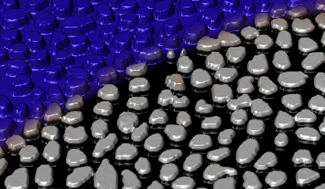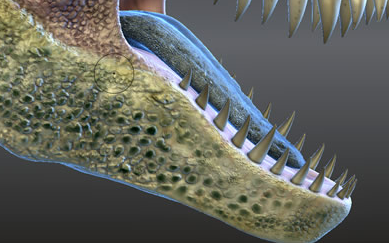The Dry Brush lets you apply paint relative to the sculpted detail on your model.

For example, you can apply paint only to the raised regions of sculpted surfaces; to add highlight color or scratches to simulate a weathered appearance. You might want to paint a brick textured surface where you paint a red color on the raised bricks, and a grey concrete color on the recessed areas where the mortar would appear.

The Dry Brush works by calculating a reference plane based on the average positions of the vertices that appear within the brush ring. Paint is applied depending on whether the faces appear above or below this invisible plane that is dynamically calculated as the brush is moved along the surface.

Pressing the Ctrl key when stroking with the Dry Brush applies paint below the calculated plane height so that paint is applied in the recessed regions of the sculpted detail.